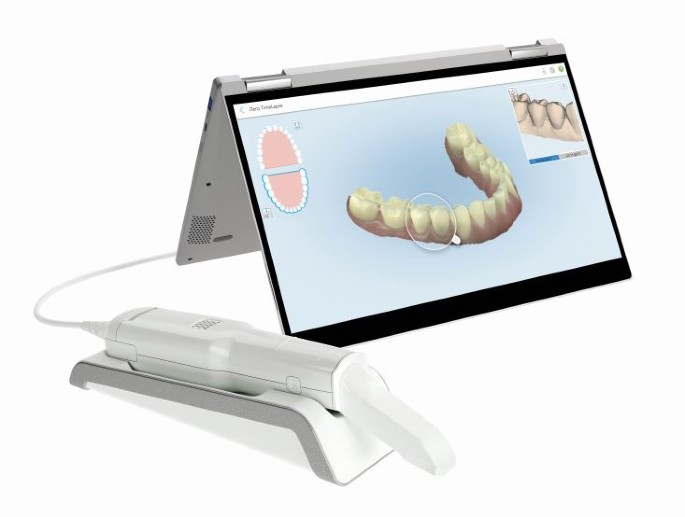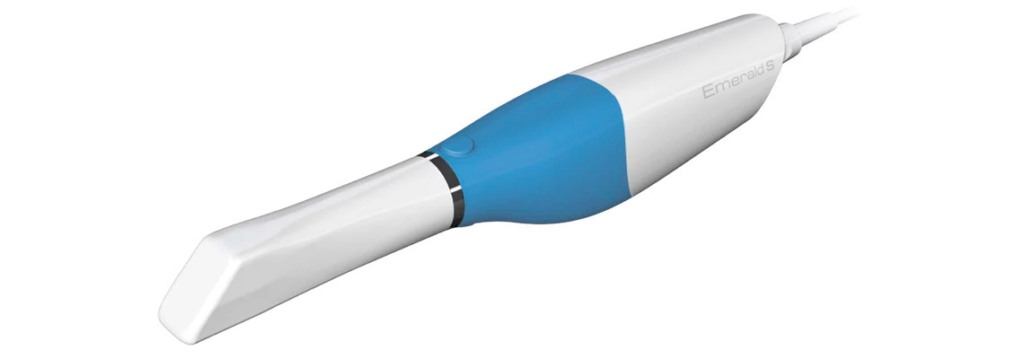Balancing quality with budget, accuracy, and speed are the significant challenges dentists face when buying a new intraoral scanner. Finding the right intraoral scanner that delivers outstanding results within the budget range can be overwhelming. One wrong decision can lead to frustration and patient disappointment.
So, it’s essential to inspect a few factors or specifications in a scanner manufacturer. It lets you choose the right scanner for your lab without breaking the bank. In this article, you will provide the details of the top 5 best intraoral scanner manufacturers with features and specifications. Furthermore, a short key factor guide enables you to make an informational decision. So, keep reading.

Understanding Intraoral Scanners and Their Impact on Dentistry
An intraoral scanner is a digital device that takes detailed or precise images of the patient’s mouth or teeth. Dentists scan the inside of the mouth and create 3D images. These images are displayed on the screen, enabling the dentist to see the exact condition of teeth and gums.
The basic components of intraoral scanners are
- Handheld wand: A small camera wand inserted inside the patient’s mouth to capture images.
- Computer: It consists of custom software to process the data from the handheld wand.
- Monitor: It displays the real image that comes from the wand.
The Intraoral Scanners for orthodontics are essential because they enable the dentist to create a better treatment plan. It saves time for both patients and staff. In just a few minutes, you can scan the patient’s mouth and make accurate diagnoses.
Top 5 Intraoral Scanner Manufacturers in 2025
Here are the detailed explanations of top intraoral scanner companies and their specifications.
Aidite
Aidite provides cost-effective and reliable scanners that meet the needs of dental labs. The Aidite Elegant 3 digital scanner is compact and lightweight. You can operate it with the help of a remote. Dentists can take or capture digital impressions with great accuracy and precision.
In the dental lab, you can quickly adjust and plan the treatment while minimizing the patient wait times. The compact design of this scanner makes it easy to handle and portable. The user-friendly interface ensures that beginner practitioners can learn and operate the system easily without any training. You can easily integrate this scanner with various CAD/CAM systems.
Specifications of the Aidite Scanner:
Scan depth: The scan depth of the Aidite scanner is 2-20 mm, which captures the minor or complex surface with great accuracy.
Scan principle: Their scanner works on the principle of non-contact with structured light. So, there are no hidden areas left to capture.
Powerful: Mostly, the Aidite scanner requires 12 V DC/3A to operate effectively without any cables. You can easily take images without any power fluctuation issues.
Pros:
- This scanner is cost-effective.
- You can create high-definition images with great precision.
- Compact design enables you to operate efficiently.
- The fast scanning speed improves the workflow.
- Compatible with other CAD/CAM systems.
Cons: This scanner lacks some features that are not necessary in dentistry.

3Shape
3Shape provides advanced intraoral scanners on the market. With high-definition optic technology, their scanner provides sharp and precise ED images. Their scanner allows you to improve both patient experience and treatment efficacy.
It has the feature of wireless connectivity. You can easily capture intricate details and create digital impressions of crowns, bridges, and implants. Dentists can easily enhance their workflow and contribute to a more organized clinical environment. The 3Shape scanners come with a higher price tag and improve Dental Care.
Pros:
- Their scanner has fast and accurate scanning capability.
- You can easily set it up without any wire connection.
- Dentists can create color images to diagnose the disease with great accuracy.
- You can easily operate their scanner without any technical help.
- User-friendly design provides extreme comfort.
Cons: Their printer may be a barrier for small practices due to the high price range.

Align Technology
Align Technology is a notable supplier of scanners in the market. They designed the scanner, especially for orthodontists. The software of their scanner is super efficient in taking digital impressions of the patient’s mouth.
Dentists can use their printers for long working hours without the need for frequent replacement or recharging. The brand mainly focuses on design to make it user-friendly. Even a beginner practitioner can easily set up a scanner.
Pros:
- Their scanner is reliable and built to last.
- It is flexible and easy to operate.
- You can make clear and more detailed scans of the mouth.
- The scanner has the ability to capture digital impressions with great accuracy.
Cons: Their scanner has some software limitations.

Planmeca
The Planmeca brand is known for its speed, precision, and ease of use. The scanner of this brand is made of high-quality material. Their scanner operates in a high-workload environment. The ergonomic design enables you to easily handle the scanner.
With quicker and more detailed scanning ability, dentists increase their productivity and minimize patient discomfort. The simple touchscreen interface enables the dentist to operate it easily. Furthermore, the simple integration with various dental software makes this scanner top-notch.
Pros:
- The user-friendly interface is easy to operate.
- It reduces the learning curve among dentists.
- Their scanner is lightweight and portable.
- Robust construction makes their scanner built to last.
Cons: Their scanner requires a frequent update, which leads to additional costs.

Carestream Dental
Carestream Dental is recognized in the market due to its precision. Their scanners are designed to provide quick 3D images with great accuracy. You can easily carry and operate it in small dental labs. The ergonomic design reduces the clutter in the workspace.
Even a beginner can capture fine detail and create quick 3D images faster than another brand scanner. The advanced feature makes it an ideal choice for various dental procedures. You can easily access patient records due to cloud-based data storage.
Pros:
- Fast scanning eliminates patient discomfort.
- Wireless connectivity simplifies the setup.
- Cloud storage enables you to access the data easily.
- Color images enhance the minor details in the image.
Cons: The software has some limitations compared to other brands.

Key Features to Consider When Choosing an Intraoral Scanner Manufacturer
Here are some key points every dentist considers when choosing the best intraoral scanner manufacturers for the dental lab.
Accuracy and 3D Image Quality
When picking the scanner, make sure the software provides 3D images with great accuracy. Some brands claim that their scanner software captures and creates high-quality 3D images. In reality, the scanner is not accurate and causes problems during operation. So, check the 3D printer image quality before making a final decision.
Ease of Use
Dentists need a scanner that is easy to operate. Look for a scanner that is simple and user-friendly. So, you can easily install it with a manual guide. If the scanner has a hard or confusing interface, it slows down your work. Aidite scanners are user-friendly interfaces that enable you to use them with great confidence.
Cost and Integration with Other Dental Systems
A good scanner is cost-effective and works well with other tools. It’s important to pick the scanner that is cheap in option but provides great value for the money. Furthermore, it should be compatible with other software operating systems. This type of scanner enables you to create a lot of extra work without breaking the bank.
FAQS
What are the components of an intraoral scanner?
The main components of the intraoral scanner monitor are embedded software and a handpiece equipped with optical sensors. All these components work collectively to capture the detail and then create 3D images for dental restorations.
What size are the scanners?
There are different sizes of scanners available in the market. The most common large-size format scanner sizes are 24 inches, 36 inches, and 42 inches. It depends on the brand specification and different models.
Who uses intraoral scanners?
Orthodontics uses a scanner to create digital models of a patient’s mouth and teeth. These models can be used to plan and design dental treatments such as braces and clear aligners with great accuracy.
Final Thoughts
To sum up, there are different intraoral scanner manufacturers that provide high-quality scanners. A scanner enables you to capture the detail of a patient’s mouth and create 3D images. It’s necessary to choose a scanner that has great scanning speed and accuracy. Check the scanning ability and results of the scanner. Sometimes, scanners create blurry images due to poor software integration and outdated system installation. Furthermore, the design of some scanners causes patient discomfort. So keep all these things in mind when choosing the best intraoral scanner manufacturers for a scanner.



